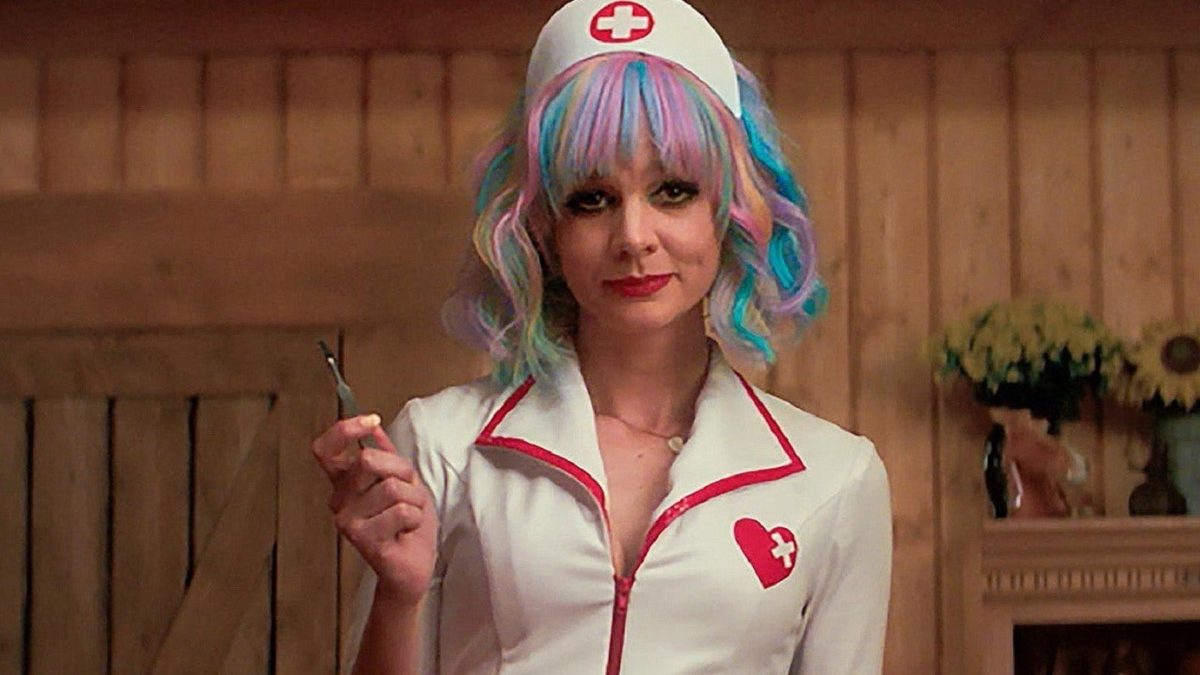Over the past few decades, feminist ideology has expanded its influence and become an increasingly popular movement around the world. More and more often, feminists are taking a stand for their rights and equality and working to make society a place of equal opportunity for all genders. With the further development of this movement comes a reflection in the media, as we see feminist characters and themes trickle into the movies and television shows we watch every day. Although the media has too often portrayed women as weak, vain characters with little to no development, some directors seem to be placing more importance on a feminist lens and allowing their female characters to take the spotlight and express a sentiment of equality. Many of these films, such as Oceans 8 and G.I. Jane, often have aspects that do not align with feminism and can be seen as hypocritical. Thus, in our discussion of the way feminism is portrayed in modern media, we will discuss not only what these films do correctly but also how they, in some ways, fall short of what is expected.
When we hear the phrase “feminist film”, many might automatically think of one of the biggest films of 2023, which had a major focus on feminism and the patriarchy. Barbie was one of the most anticipated films for women around the world, and with a revenue of almost $1.5 billion, it’s safe to say it was a major hit. Directed by Greta Gerwig, the film follows stereotypical Barbie and her journey of self-discovery as she ventures out into the real world. In Barbieland, society is dominated by women, with the Barbies holding all positions of power. However, when Barbie and Ken leave Barbieland, Ken becomes familiar with the power that the patriarchy has in our world and brings that system back to Barbieland. With men taking over, Barbie and her friends must devise a plan to take back their land and restore it to the peaceful utopia it once was.
This entire subplot regarding the patriarchy and its role in Barbieland provides a major, valid criticism that is one of the core beliefs of feminists: the patriarchy hurts both women and men. Most evidently, the patriarchy puts women in a position where they are unable to have the same opportunities as men and have to work even harder than men for the same positions and credibility. However, the film also sheds light on how the patriarchy only builds up certain men, and the rest use this system to cover up their insecurities. In Barbie, Ken uses pompous patriarchal items and ideas to hide the loneliness and lack of respect he feels in Barbieland. Once Barbie reminds him that he is “Ken-ough,” things can return to how they once were, and the negativity of the patriarchy is purged from Barbie’s life.
The state of Barbieland also advocates for a more feminist society. In Barbieland, although most systems are run by women, the men aren’t treated like they are lesser than women. The Kens are still given equal respect and opportunity, which is why, until Ken introduces the patriarchy, everything runs smoothly and peacefully. This idealized utopia in Barbieland helps to demonstrate that feminism doesn’t necessarily mean breaking men down but instead building women up so that everyone has an equal chance of success. As Barbie has represented from her creation, a woman should be allowed to have choices about the life she wants to live and the legacy she wants to create, and as this movie highlights, the patriarchy stands in the way of that idealized lifestyle.
One of the biggest problems in Barbie is not necessarily the message portrayed about feminism but rather the people who are represented within the movie. Except for a few, nearly all of the Barbies in Barbieland have thin, perfectly sculpted bodies. Unfortunately, this may send the message to young girls that only certain kinds of women can live in a perfect utopia such as Barbieland, and create unrealistic body standards at an early age. Studies in the past have shown that playing with stereotypical Barbie dolls already alters girls’ perception of an ideal body, and the Barbie movie may, unfortunately, solidify this idea.
The lack of inclusivity around body types demonstrated in Barbie mirrors Mattel’s inclusivity struggles in recent years, with many of the Barbies with varying skin tones and body types being released only nine years ago in 2015. Ultimately, to be effective and powerful, feminist messages must apply to all women and consider all women’s struggles. Feminism must be intersectional, which means feminist issues consider the myriad of ways layers of discrimination can multiply based on race, gender, religion, sexuality, ethnicity, etc. If the Barbie movie fails to represent all women in its campaign for feminism, it cannot truly speak to the intersectional reality of injustice we face.
Despite Barbie accomplishing many things for feminists around the world and introducing an important conversation about the patriarchy, the world’s appreciation of the movie falls a bit flat. For example, recent Oscar nominations show that neither Greta Gerwig nor Margot Robbie received nominations for Best Director and Best Lead Actress, respectively. However, Ryan Gosling received a nomination for his supporting role as Ken. Many have argued that this demonstrates how, despite the film’s attempts to bring more attention and appreciation to accomplished women, society still doesn’t necessarily appreciate the message Gerwig intended to send.
For a directorial debut, Emerald Fennell’s Promising Young Woman made a huge mark on feminist society, leaving viewers conflicted over whether the film was an empowering female revenge thriller or a film that pretended to be feminist. The film follows a woman named Cassandra (Cassie) who sets out to avenge the sexual assault and resulting suicide of her friend Nina. Cassie goes out to bars every weekend pretending to be extremely drunk, and when “nice guys” take her home and try to take advantage of her, she reveals her sobriety and calls them out for their behavior. Cassie also sets out to punish people closely associated with Nina’s assault, such as the lawyer who defended the perpetrator and the Dean of their school who took his side in the case. When Cassie finds love with a man named Ryan, it is all the more heart-wrenching to viewers to find out, alongside Cassie, that he was one of the bystanders to Nina’s assault. The film’s final scenes reveal Cassie confronting Nina’s assaulter, Al, and being killed by him in a tragic finale, ending with his arrest.
One of the most interesting aspects of Promising Young Woman is Fennell’s casting choice for the guys who try to take Cassie home with them. From Adam Brody to Max Greenfield to even Christopher Mintz-Plasse, Fennell casts many well-known, well-liked comedic actors in Hollywood. This contrast of who we believe these actors to be versus the characters that they play helps to emphasize that even those who we believe are nice, trustworthy people are capable of committing these horrible acts. Ultimately, the film helps to bring the serious conversation around rape and sexual assault into the spotlight through a film that is not necessarily marketed as such. Its focus on criticizing not only assault but the complacency surrounding assault brings attention to related issues that deserve just as much attention. Cassie is a strong woman who shows that those who have been through trauma do not have to be defined by their pain. Her quest for vengeance also forces viewers to confront uncomfortable truths about silence and enabling behavior. The film can take on a feminist lens by criticizing a system we have put into place where many men feel they can take advantage of women, and the repercussions are often slim. However, Cassie also criticizes the roles of some women in this system, going after the female bystanders as well.
Despite Promising Young Woman’s ability to portray a strong female character and inspire other women to fight for justice while also criticizing rape and assault culture, it falls flat in some aspects that would make the film fully feminist. The fact that both Nina, the victim, and Cassie, the one trying to put an end to these repeated assaults, end up dead by the end of the movie does not send a positive and uplifting message to viewers. While the reality of sexual violence is extremely bleak, survivors can—and do—live lives that don’t always end in tragedy. The film’s ending also puts the main focus and goal on arresting perpetrators when it could be on empowering and strengthening survivors. As we have seen time and time again, the justice system often allows cases of rape and assault to fall by the wayside, with inadequate and even no punishments given in some cases. While legal reform is beyond essential, we must also focus on holistically supporting survivors. Ultimately, however, Promising Young Woman brings many important topics into the conversation, all through a strong, powerful woman’s journey to put an end to her best friend’s trauma and change the way that some men in society think and behave.
In the last few decades, Hollywood has changed dramatically. Gone are the submissive, stereotypical depictions of womanhood in Sleeping Beauty or Snow White. Movies like Promising Young Woman and Barbie show that while feminist role models are a necessity in cinema, there are still aspects of feminism that are often neglected by the media we see today. Portrayals of Black women, especially, often engage in stereotypical, hypersexual depictions of characters in extremely harmful ways. Black women are frequently sexualized in the media and portrayed as expendable commodities, with their bodies being inappropriately displayed and represented in a way that doesn’t truly reflect the intellect and all of the incredible accomplishments they have to offer to the world of feminists. This stereotype and sexualization of Black women is incredibly damaging and creates a harmful notion that can impact the way society treats women of color. Thus, the movies that claim to be feminist must develop films that are true to the feminist experience of all women and do not give in to any generalizations that may hurt a particular group. Time and time again, we see the importance of increasing the number of female directors and ensuring that diverse voices are creating honest depictions of diversity in the media we consume.












